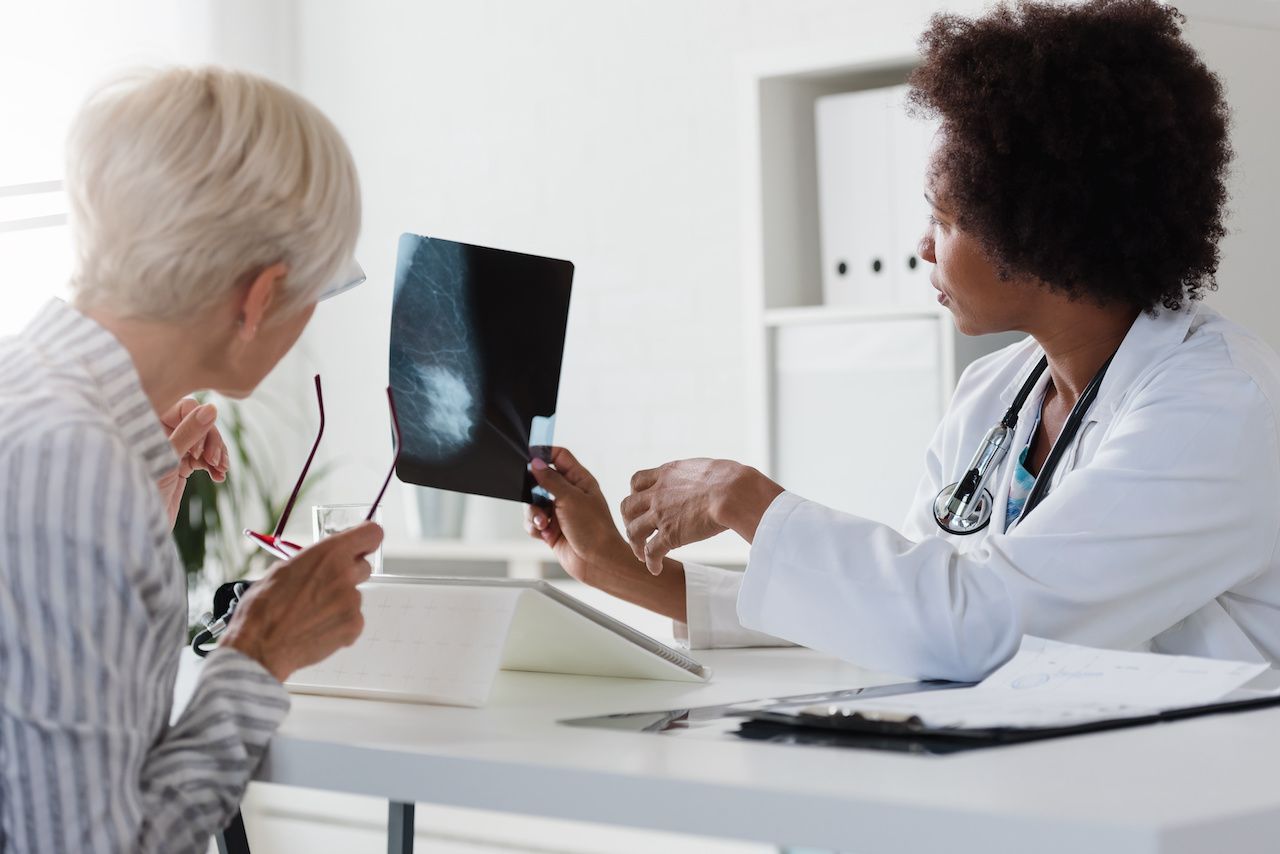- Center on Health Equity & Access
- Clinical
- Health Care Cost
- Health Care Delivery
- Insurance
- Policy
- Technology
- Value-Based Care
Call to Action Issued for Education on Lesser-Known Breast Cancer Symptoms
Some of these symptoms include breast puckering, nipple discharge, and retracted nipple.
Nipple discharge was recognized as a symptom of breast cancer by just over half (51%) of respondents—women and men—to a survey administered by The Ohio State University Wexner Medical Center/Arthur G. James Cancer Hospital and Richard J. Solove Research Institute (OSUCCC – James). This and other findings highlight the need for more comprehensive education surrounding breast health and breast cancer, experts emphasize.
Other lesser-known symptoms, or subtle changes, indicating breast cancer include pitting/thickening of the breast skin (45% are aware this is a symptom of breast cancer), loss of feeling in the breast (41% are aware), breast indentation when raising an arm (39%), and a retracted, inverted, or downward-pointing nipple (31%). In stark contrast, 93% of adults know that a lump is often a sign of breast cancer—although most breast cancers present with an undetectable lump.
A female doctor sits at her desk and talks to a female patient while looking at her mammogram. Breast cancer prevention
Image Credit: lordn - stock.adobe.com

“Screening mammography is our No. 1 defense in detecting and addressing breast cancers at their earliest, most treatable stages,” explained Ashley C. Pariser, MD, a breast medical oncologist and director of breast cancer survivorship services at the OSUCCC – James, in a statement.1 “But it is also very important for people to be familiar with the look and feel of their own breast tissue so that sometimes subtle changes can be evaluated quickly to give us the best chance at early detection.”
Additional less-well-known symptoms of breast cancer include a red, warm, swollen breast; scaly and dry skin around the nipple; nonmilk secretions from the nipple; and swelling around the armpit or breast.2
Should any of these symptoms occur prior to an annual checkup, experts stress the importance of getting in earlier to see a physician, especially since they can mimic other inflammatory illnesses that are not cancer.2
Combined with a lack of knowledge on the lesser known symptoms of breast cancer is confusion on screening guidelines, with the OSUCCC – James survey highlighting that although mammography still holds the top spot for early detection of breast cancer, one-third of women overall express confusion on these recommendations. This jumps to 44% in women younger than age 30.
Parise emphasized the importance of making an appointment for a screening mammogram if you qualify, noting, “The best way for us to find breast cancer early is for women to present as soon as they notice a change, ideally even before they see a change.”
It was only earlier this year that the US Preventive Services Task Force released a draft recommendation that age 40 should be the benchmark for all women at average risk of breast cancer to get their first screen, every other year, down from the previous age of 50 years,3 which also is the recommendation of the American College of Radiology and American College of Obstetrics and Gynecologists.1 However, a higher disease risk among individuals with dense breast tissue and those of Black and Ashkenazi Jewish descent may necessitate more intensive screening.
According to the American Cancer Society, breast cancer is the second most common cancer diagnosed in women, behind only skin cancer, with invasive disease and ductal carcinoma in situ placing 1 and 2, respectively.4 Less than 1% of all breast cancers are diagnosed in male patients.1
References
1. Survey finds education is needed to identify lesser-known symptoms of breast cancer. News release. The Ohio State University Comprehensive Cancer Center. October 16, 2023. Accessed November 13, 2023. https://james.multimedia-newsroom.com/index.php/2023/10/16/survey-finds-education-is-needed-to-identify-lesser-known-symptoms-of-breast-cancer/
2. Kreger A. Breast cancer can take many forms — here are 5 lesser-known symptoms to look for. Ohio State Health & Discovery. October 4, 2023. Accessed November 13, 2023. https://health.osu.edu/health/cancer/lesser-known-breast-cancer-symptoms
3. Caffrey M. In reversal, USPSTF draft recommendation calls for breast cancer screening at age 40. AJMC.com. May 9, 2023. Accessed November 13, 2023. https://www.ajmc.com/view/in-reversal-uspstf-draft-recommendation-calls-for-breast-cancer-screening-at-age-40
4. Key statistics for breast cancer. American Cancer Society. Updated September 14, 2023. Accessed November 13, 2023. https://www.cancer.org/cancer/types/breast-cancer/about/how-common-is-breast-cancer.html
